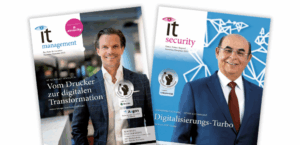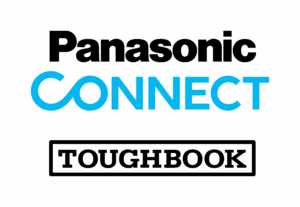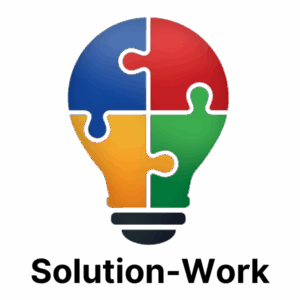The responsibility of companies does not end at the physical boundaries of their premises. Following the extension to the German Supply Chain Act in January 2024, the next innovation is now pending.
In March, the EU agreed on significantly stricter supply chain legislation. Larger companies must draw up a plan that ensures their business model and strategy are compatible with the Paris Agreement on climate change. In future, they will be responsible for their entire business chain.
The effort on the part of companies is considerable and the new laws pose numerous challenges – entrepreneurs have two years to adapt to the law and the increased requirements. The new EU regulation obliges companies to produce comprehensive ESG (environmental, social and governance) reports, which can be laborious, time-consuming and non-transparent when prepared manually. Providing evidence of compliance becomes a cost-intensive task.
Non-uniform systems and methods
In many companies, the IT structure is no longer compliant: until now, numerous peripheral processes and systems have been based on spreadsheets and email. This makes collaboration with suppliers and adherence to governance and compliance regulations extremely difficult. In addition, managing complex relationships with service providers requires extensive due diligence. Companies must ensure compliance with complex, multidimensional sanctions checks depending on, for example, region, product category and order volume, and minimize business risk. Many different departments work together here, sometimes at a very individual case level. Manual processing means that errors are inevitable: These processes in disparate systems are non-transparent and inefficient.
Many companies are overcoming these difficulties by using modern digitalization technologies, which also enable them to orchestrate and automate their processes. New technologies simplify the way in which the relevant data is collected and reported. This saves human resources for coordination and processing. However, many companies often only take the plunge after much deliberation: In order to be able to use current digitalization and automation potential to map new governance and compliance regulations, corporate IT must map new technology platforms in its architecture.
Platform for process orchestration
The current supply chain laws clearly show how important the digital orchestration of processes is today. Companies now need to control complex tasks, automate them to shorten workflows and ensure they function smoothly. The basis for this is a platform with a high level of integration capability. Appian docks onto existing ERP systems. Flexible, interchangeable data sources connect with each other and create a standardized system. In this way, process variations are orchestrated across different systems – for greater transparency and efficiency.
Connection of data sources and process optimization
Data fabric tools are particularly suitable for accelerating change. They are an important component of a corresponding process automation platform. Complex automation on a large scale requires a solid data architecture that connects different data sources – because information is often still stored in data silos that are scattered across the entire organization.
Data Fabric plays a central role in this context, as the approach links data sources in different systems – whether on-premises or in cloud environments – and integrates them into the process workflows.
A data fabric solution standardizes the view of data from different systems and even allows information from one system to be related to a completely different system on the basis of a data field.
Fabian Czicholl, Appian
The data records remain in their original systems. Thanks to a virtualized data layer, the information does not have to be copied from its current storage location, such as a database, ERP system or CRM application, if it is to be worked with. Access to real-time data enables better quality and faster decisions – and relieves IT teams of time-consuming and cost-intensive data integration work. This allows business data to be used in new and particularly efficient ways.
Appian’s process automation platform also combines other technologies to optimize and automate the corresponding overall processes. Specifically, these are robotic process automation (RPA), intelligent document processing (IDP), workflow orchestration, the use of artificial intelligence (AI), as well as system integration and business rules.
Standardized analysis
Another advantage is the standardized analysis. As described, a data fabric solution uses a virtualized data layer to contextualize or connect data from any source into a unified model. This allows companies to gain a more comprehensive and accurate view of their processes and customers as well as the relevant markets. The unified data model also allows advanced analytics forecasts to be made that were previously not possible. Data Fabric also supports real-time insights. The virtualized data layer plays a key role in this by consistently transferring updates to and from the original data source both when reading and writing data. This means that the information is always up to date and decisions can be made more quickly.
High reliability of data access at every level is of central importance. This is ensured by the data fabric architecture, which allows access to be effectively restricted even at granular levels.
More effective use of data
A data fabric solution unifies the view of data from different systems and even allows information from one system to be related to a completely different system on the basis of a data field – quickly and across sources. What used to be an extensive task for data scientists and development teams is now a simple query in a data fabric system.
By connecting data, taking into account a cross-source rights concept and supporting agile analyses in combination with an application development environment for workflows, Data Fabric offers companies the opportunity to use their data more effectively within processes – and above all to have maximum compliance security.
Economic advantages
It’s no secret that manual processing slows down and complicates processes – and there is an increased risk of human error. In conjunction with stricter regulations and sanctions, this can have fatal economic consequences. A process automation platform based on a powerful data fabric component therefore offers business benefits: These include development speed and scalability, as a data fabric architecture offers consistent functions for all developments in the area of data-driven applications.
Without a data fabric approach, hybrid environments require complex data engineering skills to integrate the required information into the corresponding applications. This leads to delays in the development of new business applications. With Data Fabric technology, data can be easily accessed, managed and analyzed regardless of its location or format. This also helps in scaling data across applications.
Automation platform as an “agility layer”
The Data Fabric tools for Appian’s process automation platform are characterized by pre-built connectors that link systems such as CRM, ERP and database applications without having to develop these integrations from scratch. Workflow orchestration should also be available to seamlessly distribute or coordinate a wide range of tasks between software bots and human employees.
A platform with a high level of integration capability for systematic process orchestration is docked onto the existing systems as an “agility layer”. Different data sources are connected with each other and can be flexibly exchanged during an ongoing migration. In this way, Appian orchestrates process variations across systems using the company’s own platform. This creates transparency and increases efficiency.
Process automation that goes beyond this first step has the potential to fundamentally change the way companies communicate with vendors and suppliers. Linking the data sources of ERP systems and automating case handling processes creates dynamic ad-hoc workflows. With appropriate workflow functions, tasks and work steps can be coordinated – and countermeasures can be taken or automated as required, thereby increasing efficiency.
Appian’s case management platform supports the creation and management of business rules and enables employees to quickly adapt processes to new situations. Overall, the solution can be implemented and used quickly and flexibly. The corresponding user interface is also immediately available on mobile devices.
AI and machine learning for structured data
For a sophisticated solution such as an automation platform, new technologies are crucial to success. In the field of automation, this is artificial intelligence in particular. Take intelligent document processing (IDP), for example. Machine learning can convert unstructured information into structured data or even classify documents automatically. Current developments in generative AI and large language models support process automation.
Pre-trained AI models that are specially trained with the company’s own data should never send this company data back to the AI provider. Such private AI guarantees data protection and compliance with the respective company policies.
With the right methods, the challenges of the new compliance guidelines can be mastered well. This enables companies to act efficiently and transparently and fulfill their responsibilities. Digitalization and automation are key means of meeting the requirements of new ESG laws and the new Supply Chain Act and ultimately contributing to a more sustainable and fairer world.

















